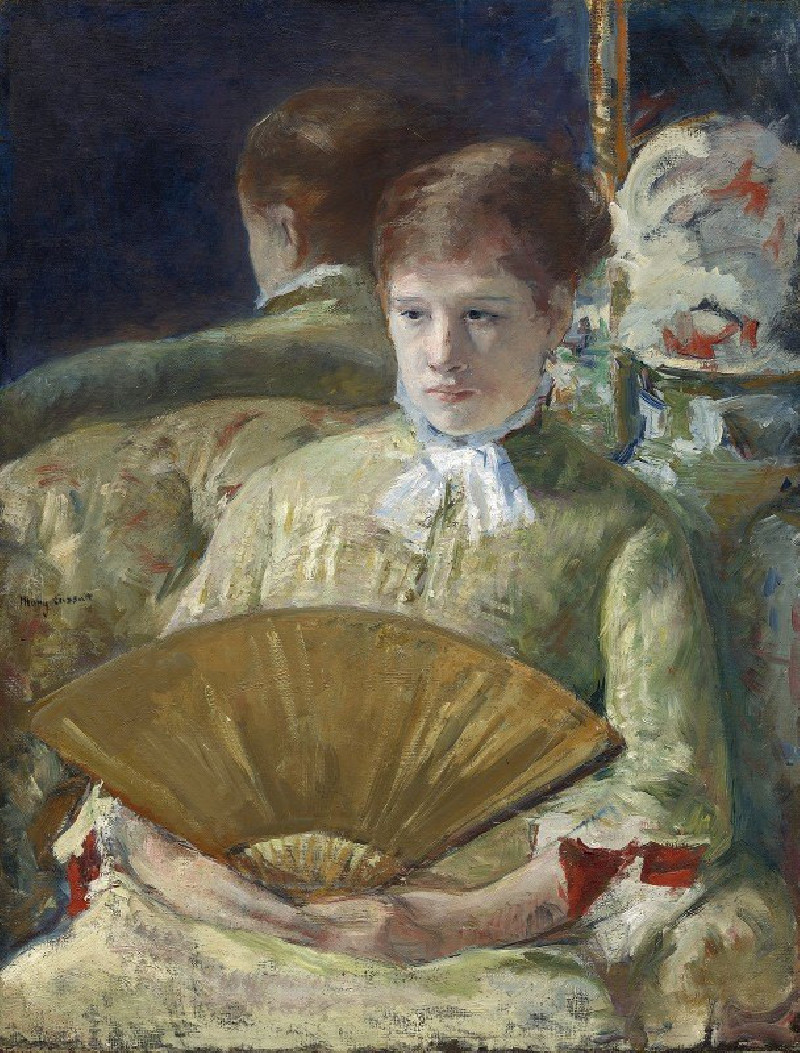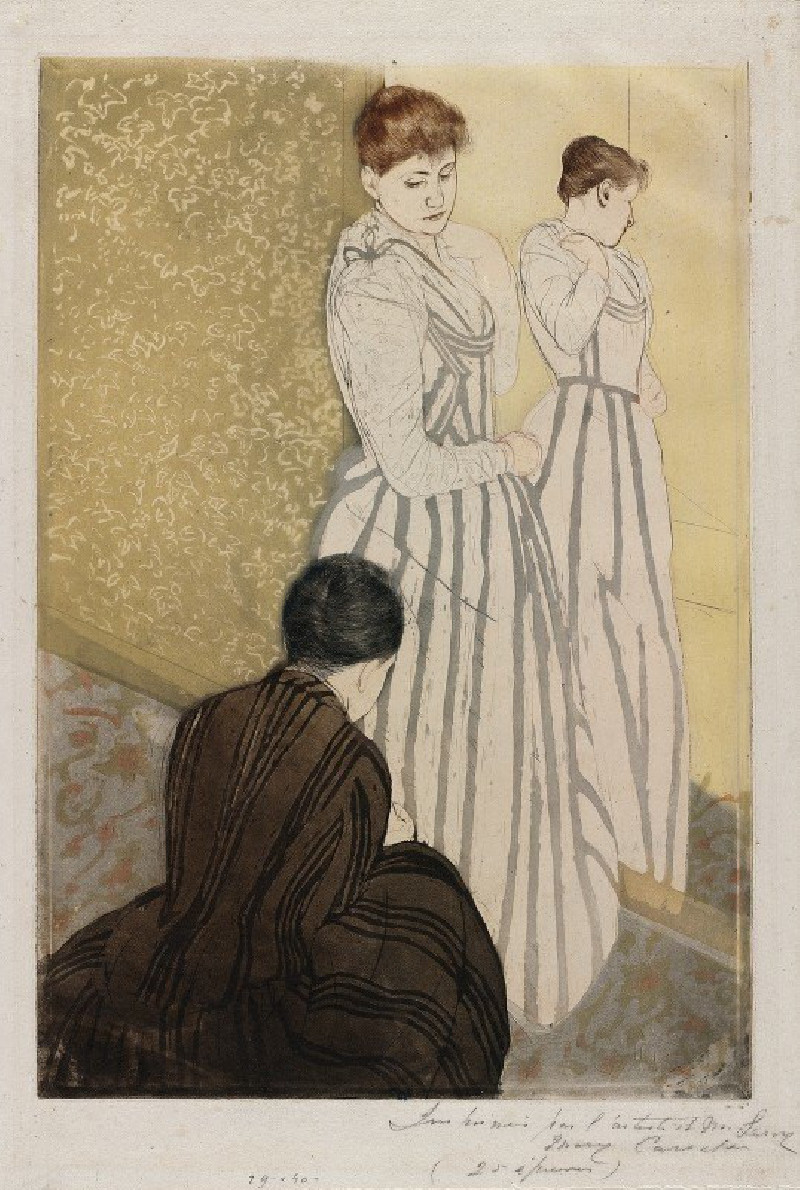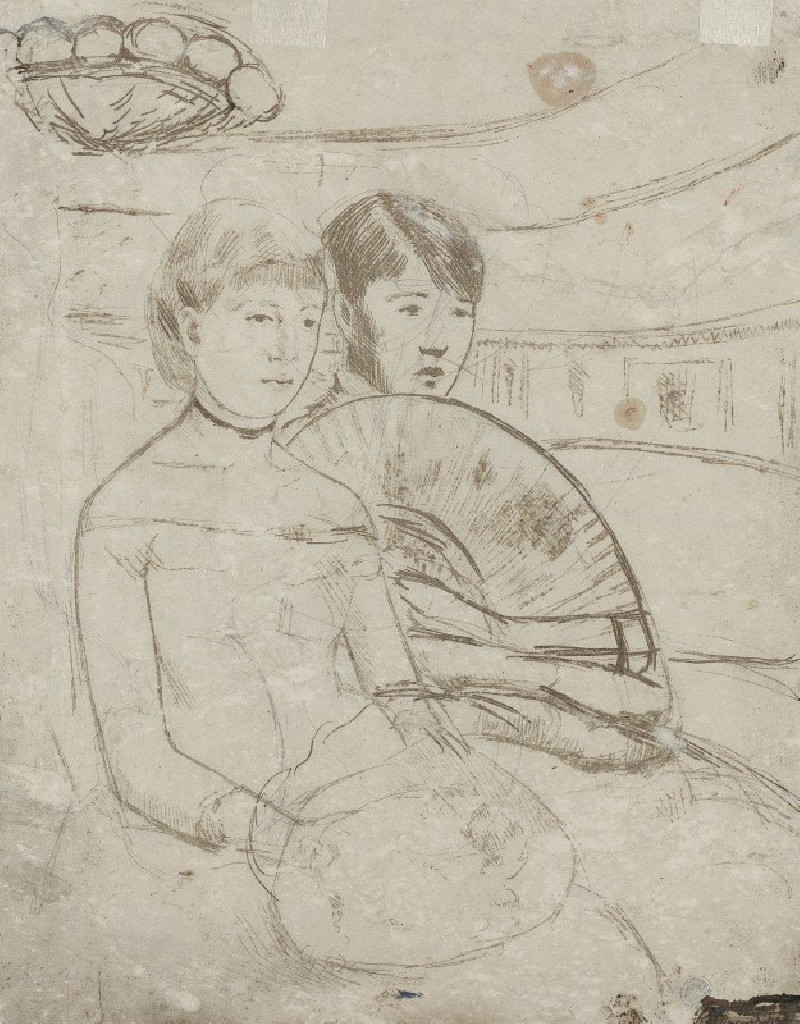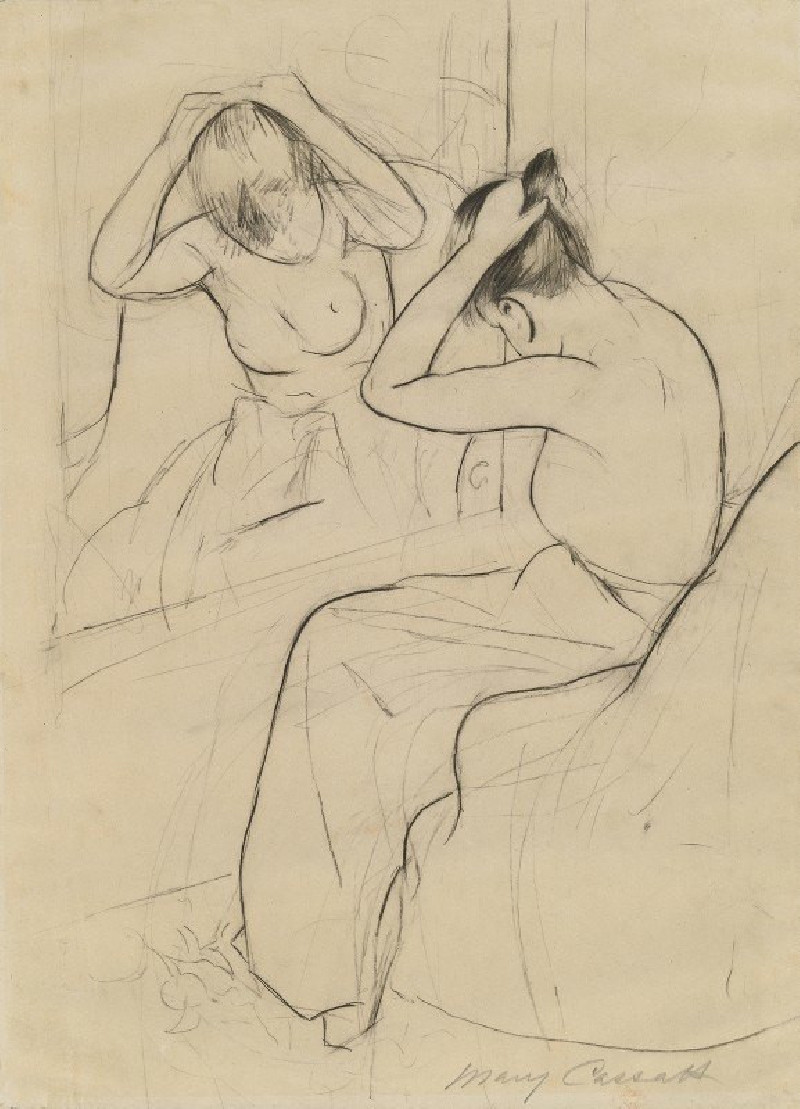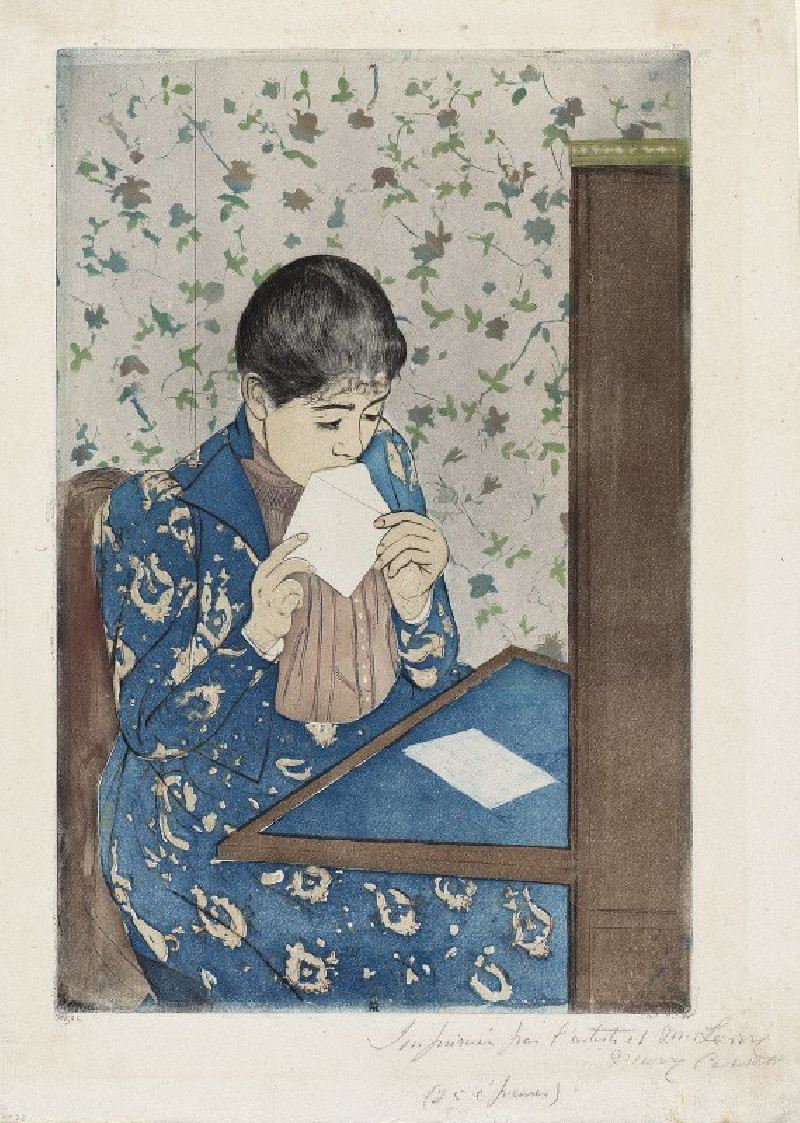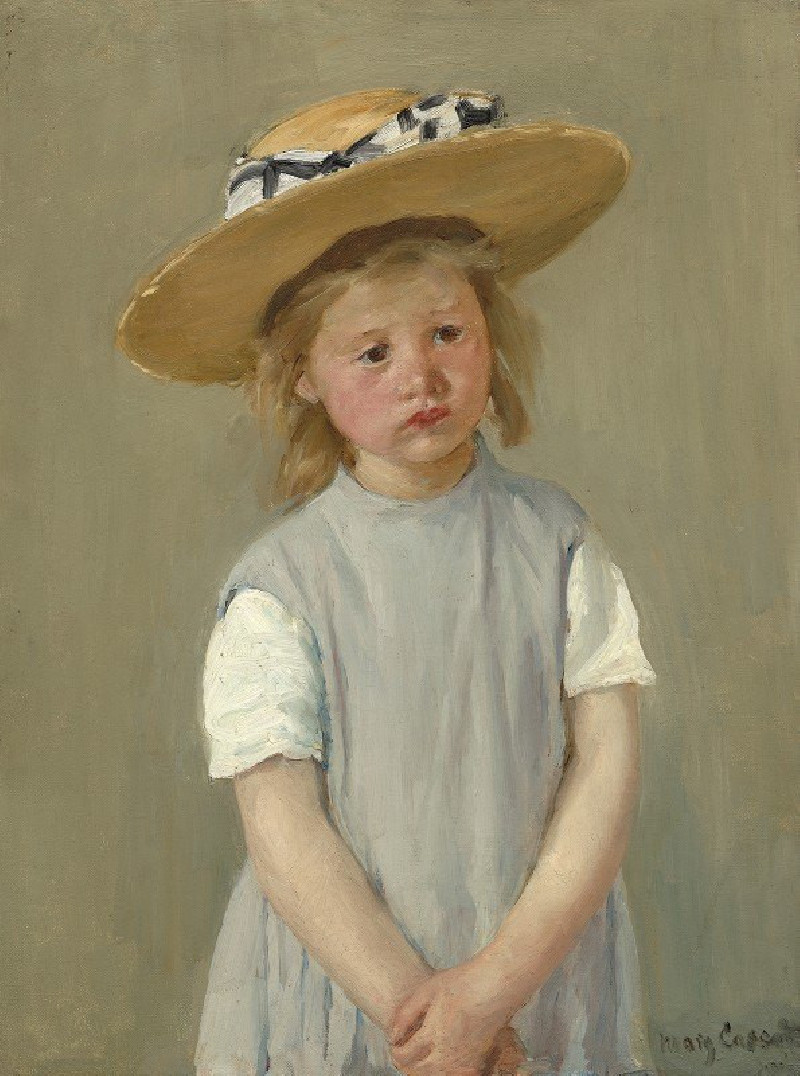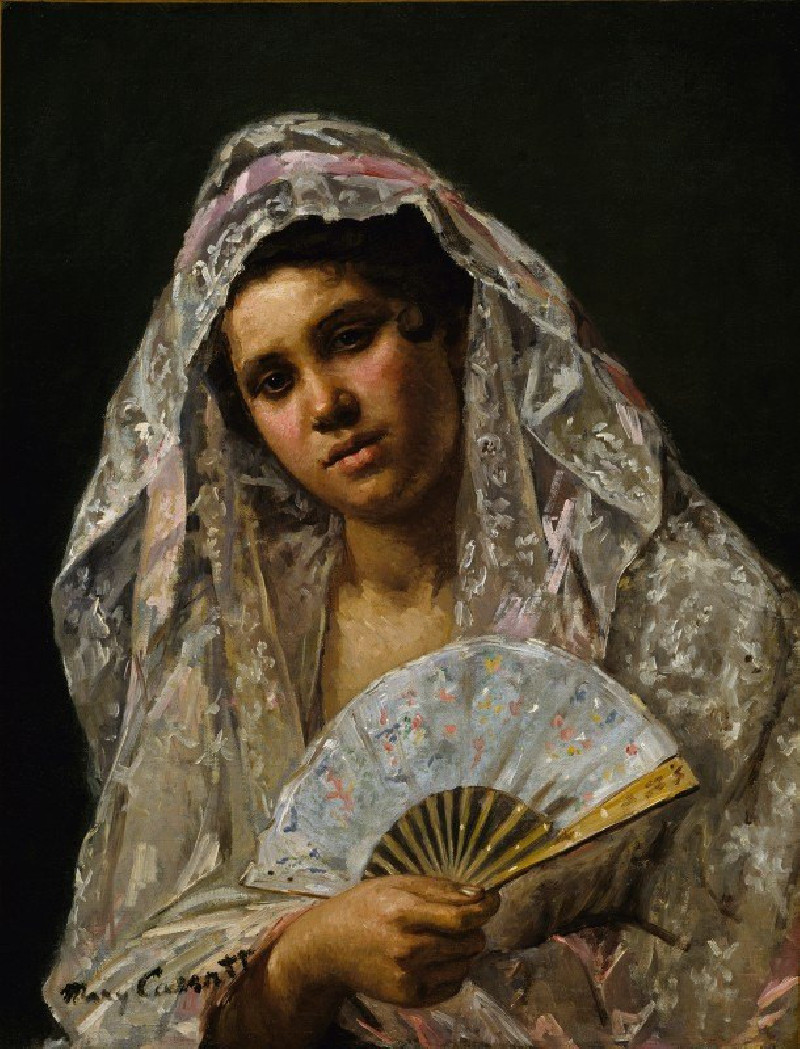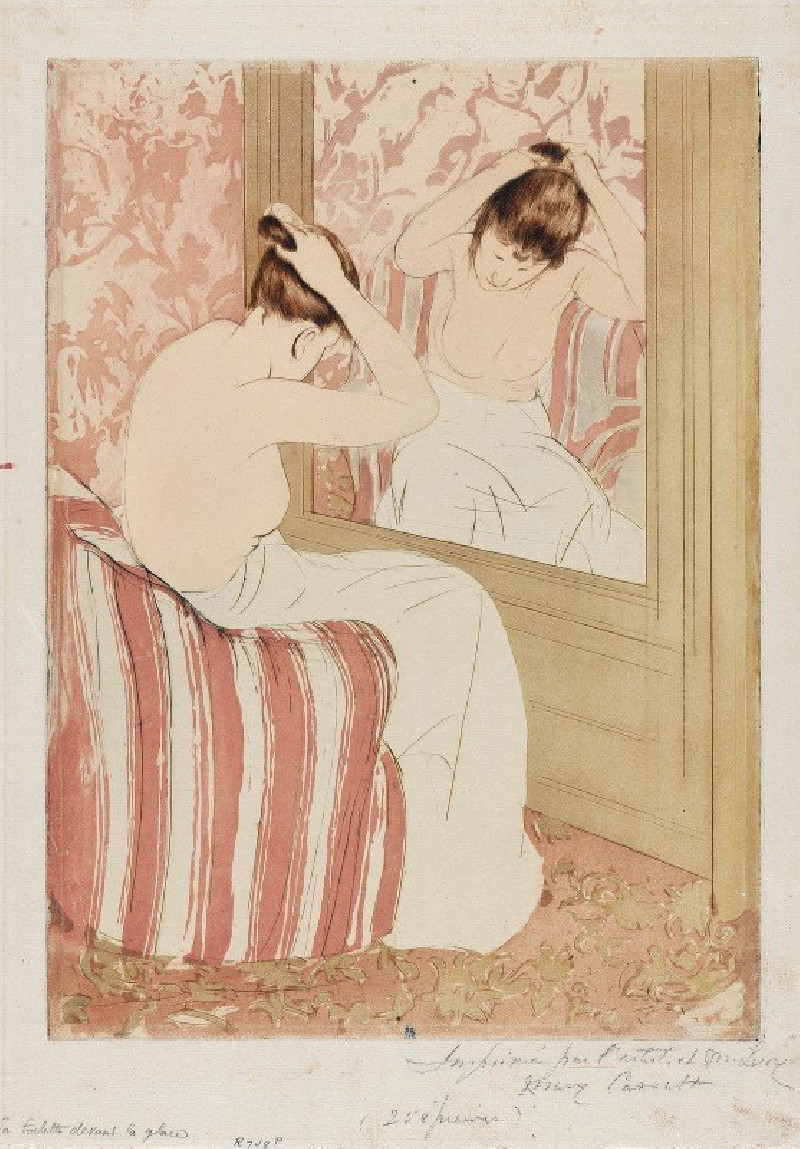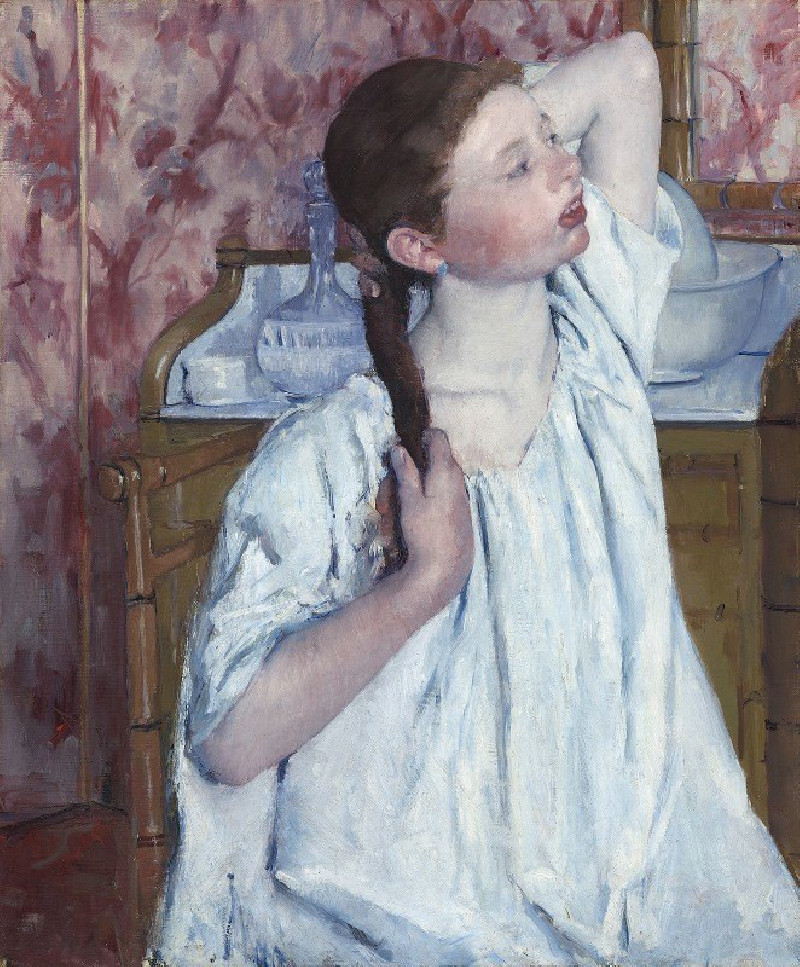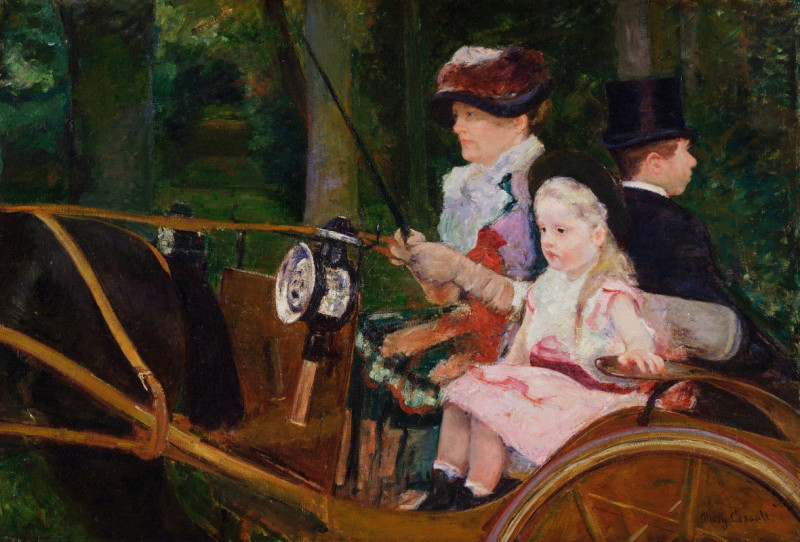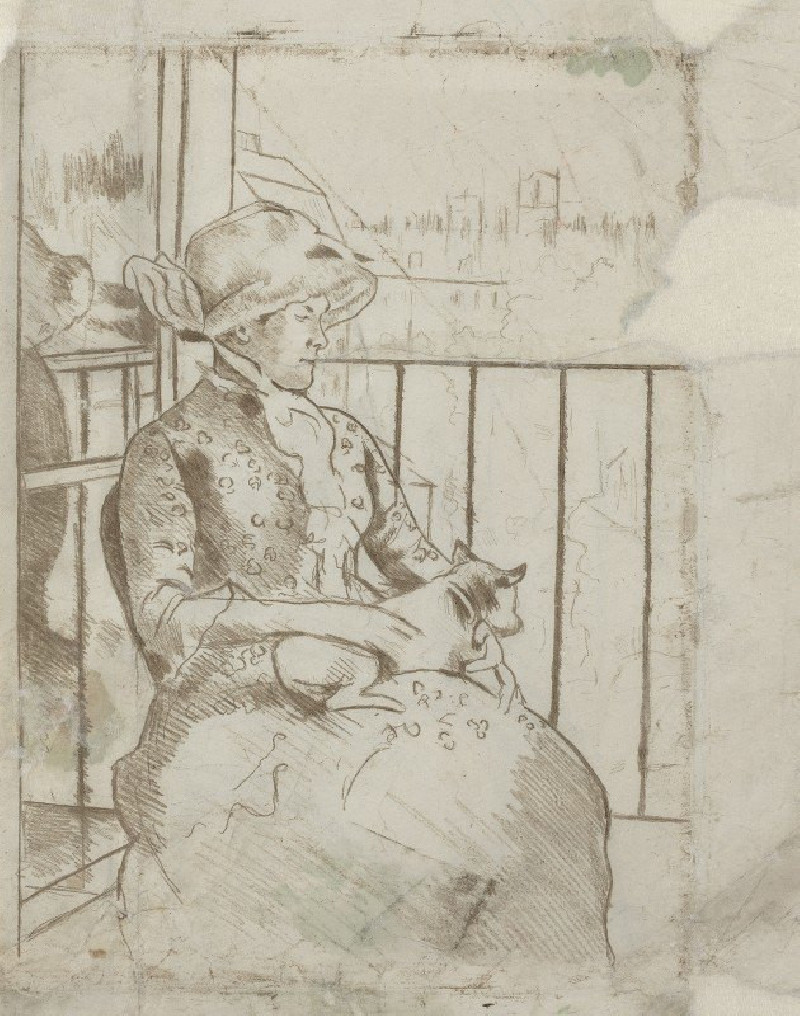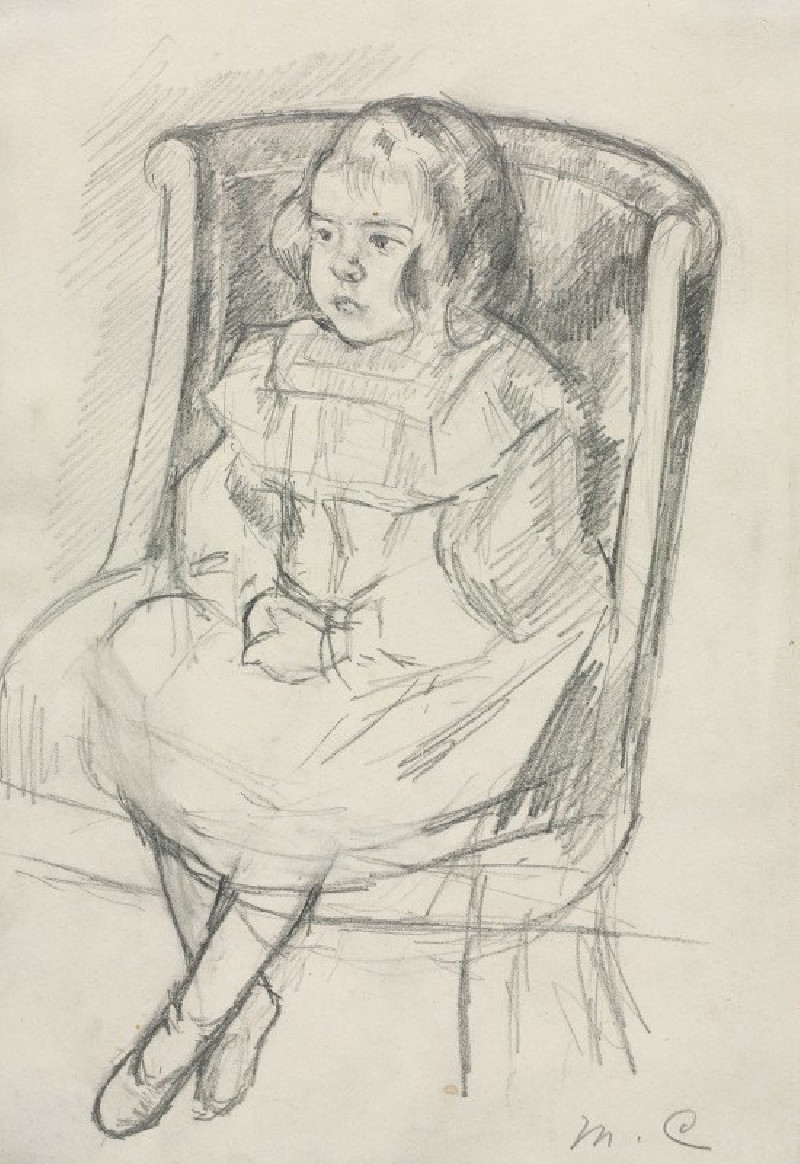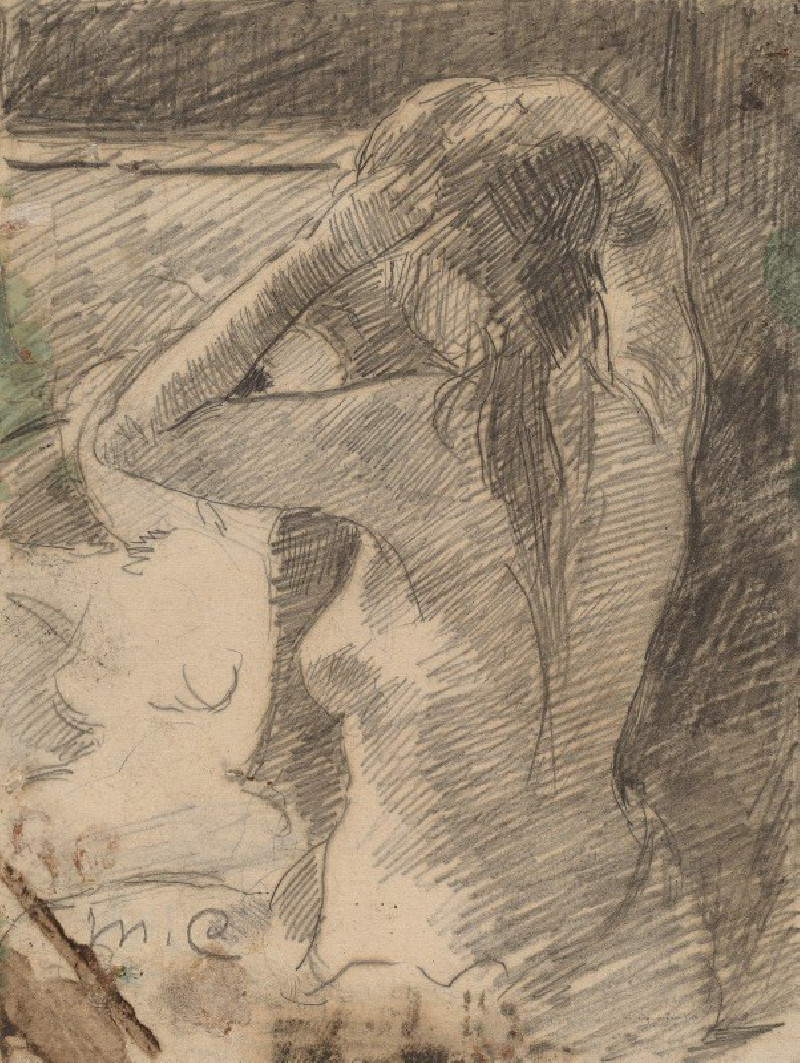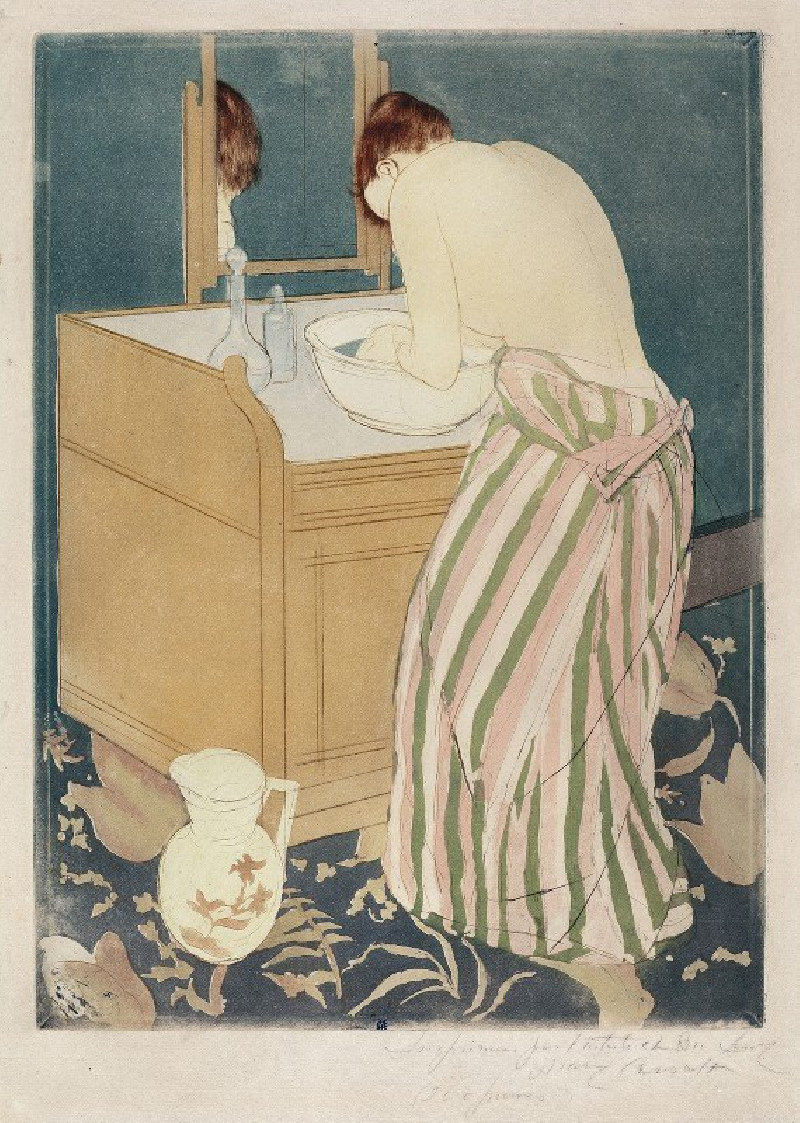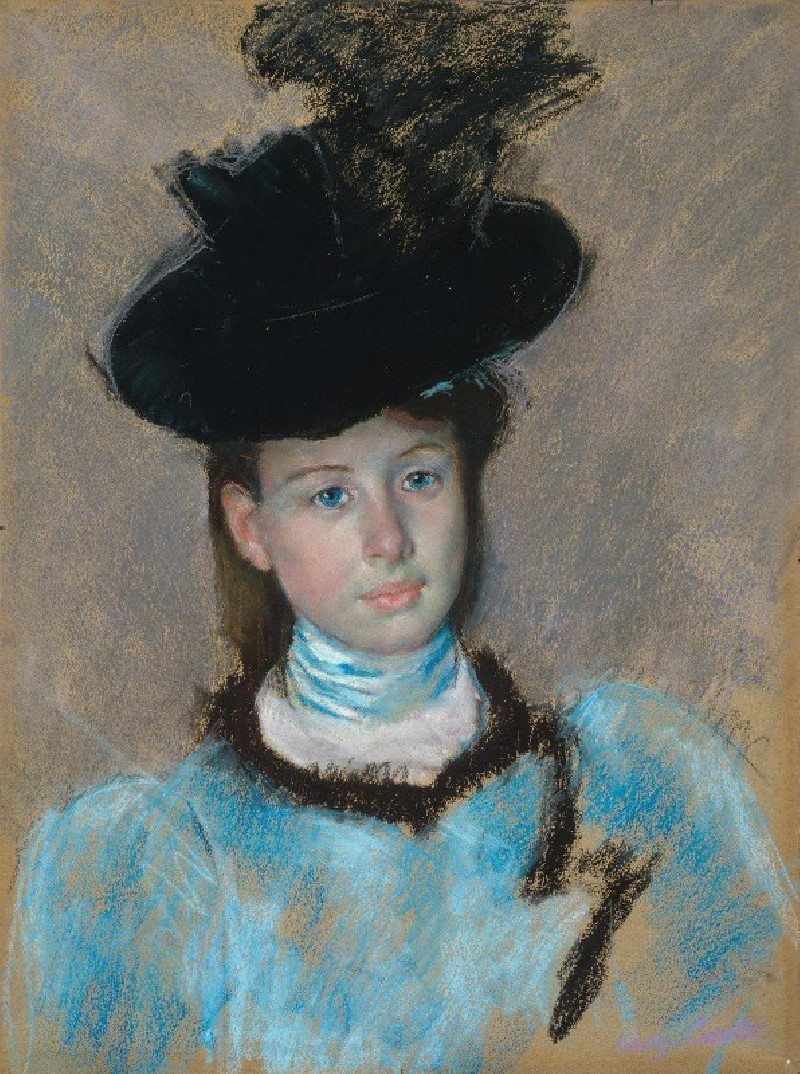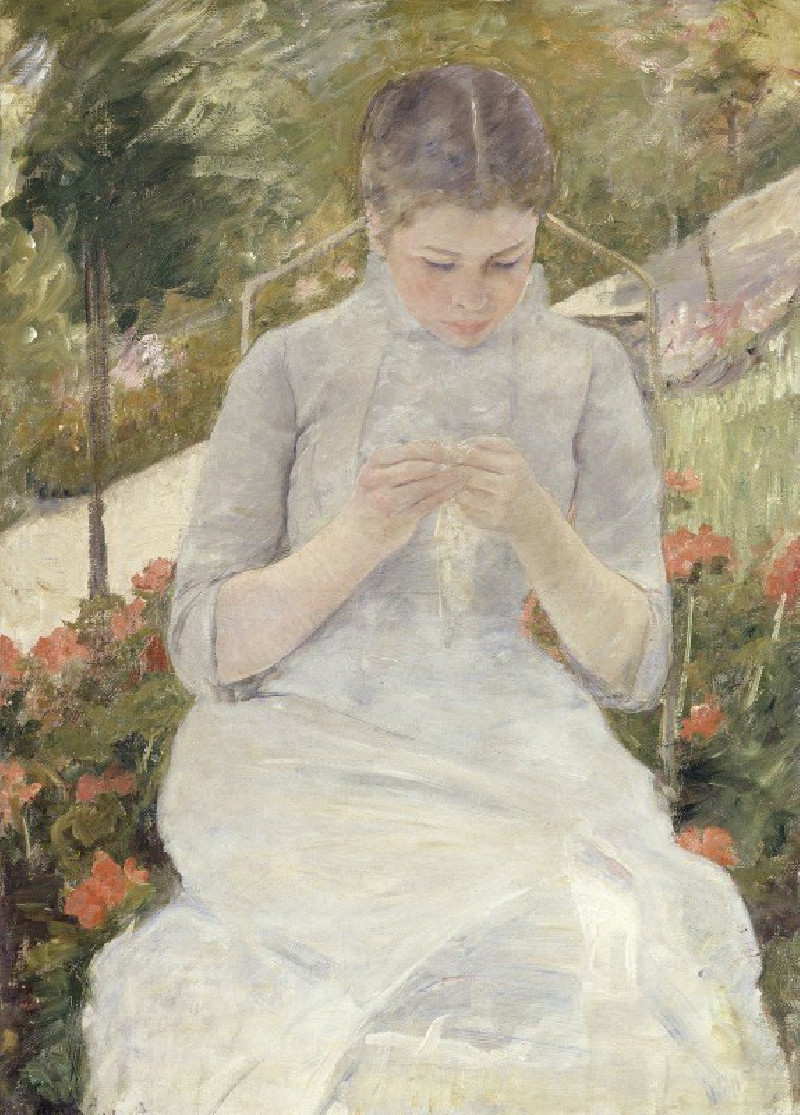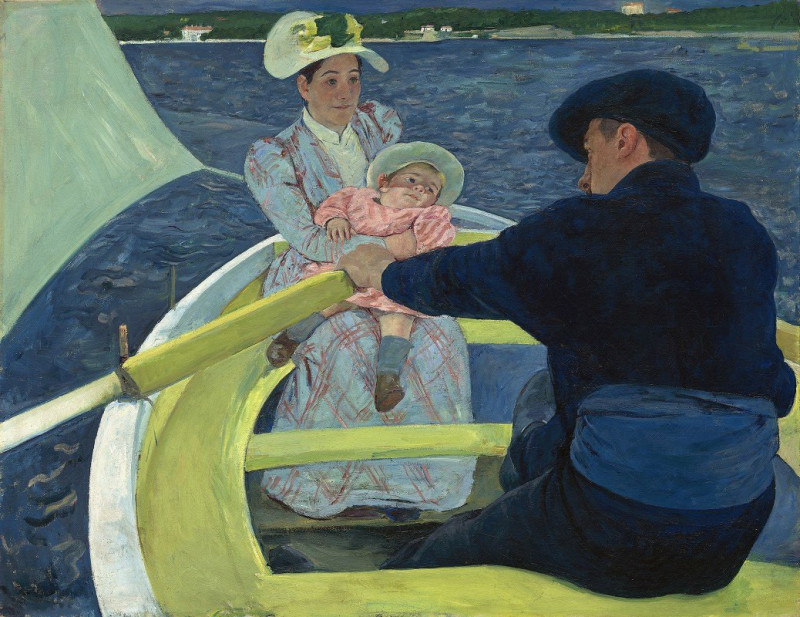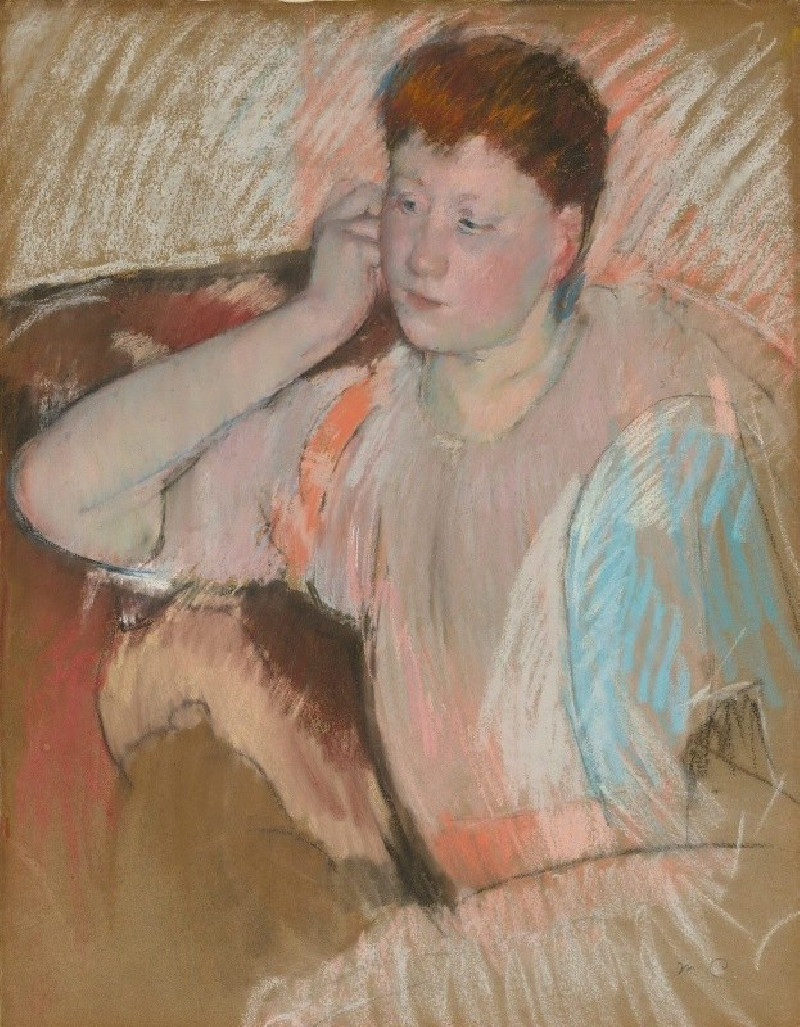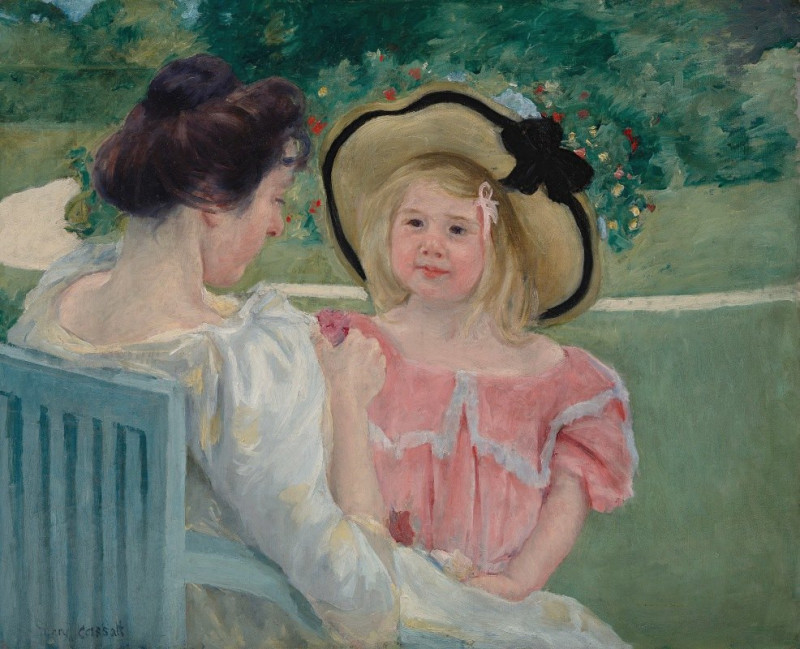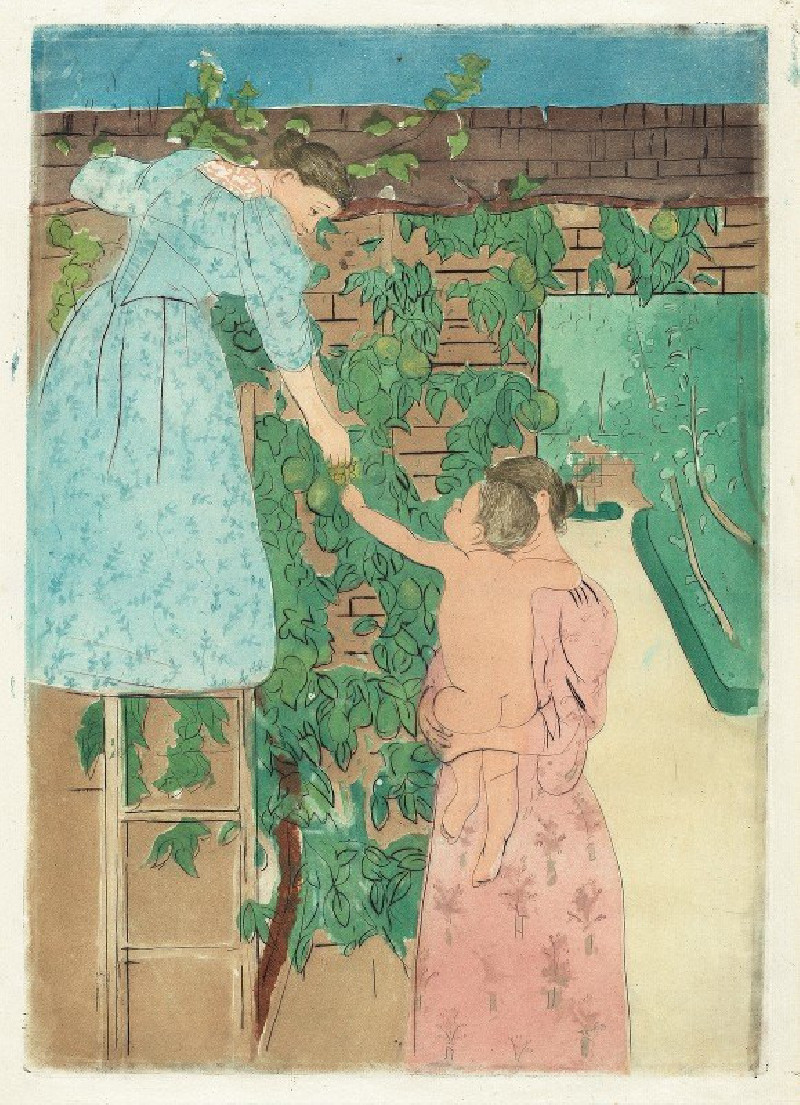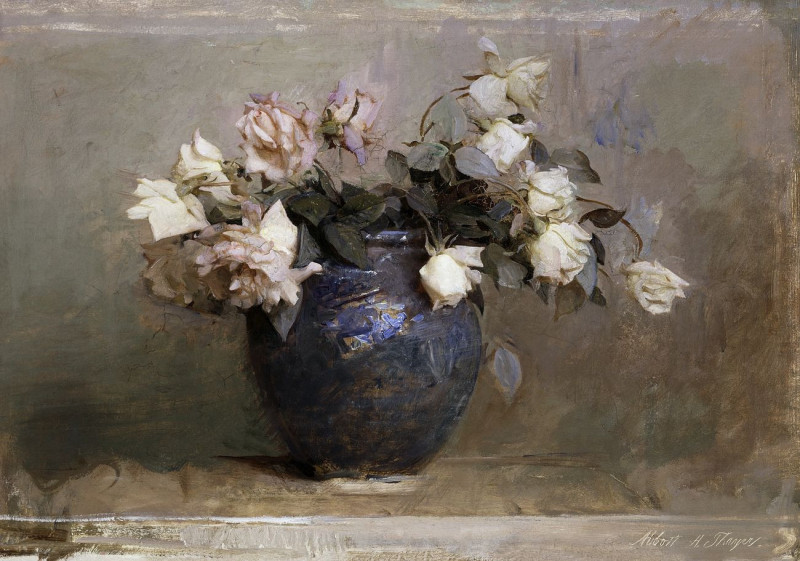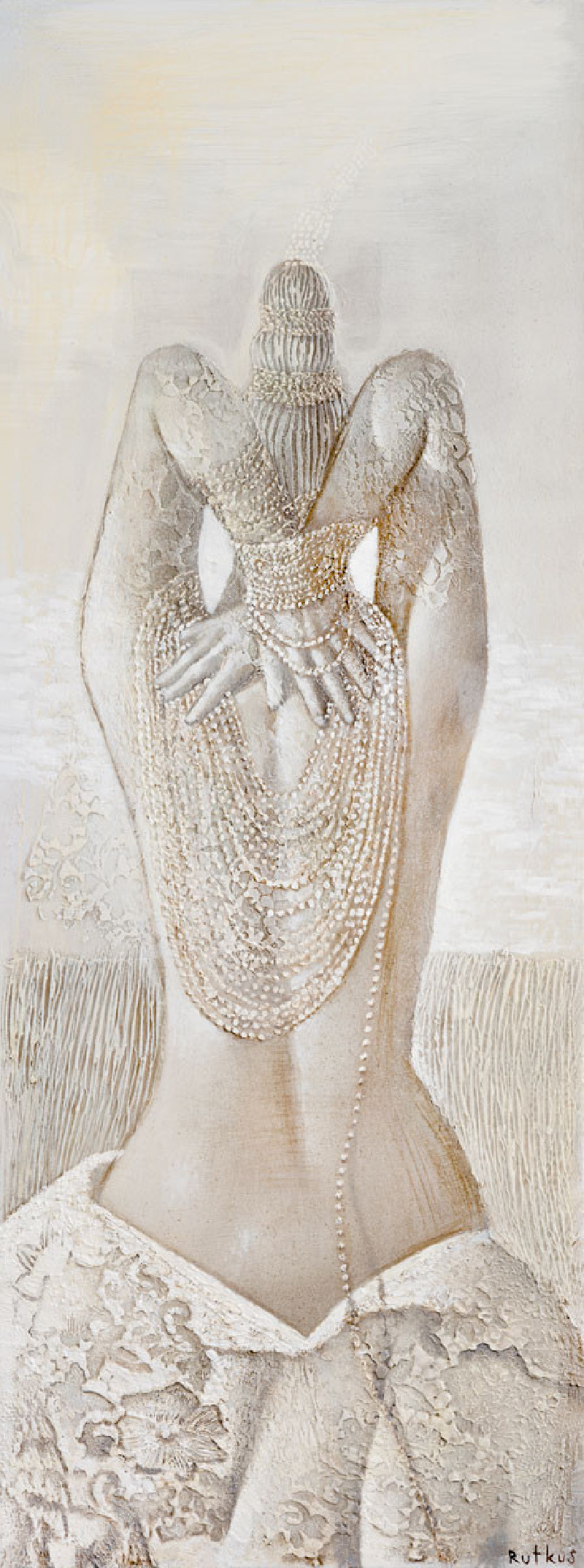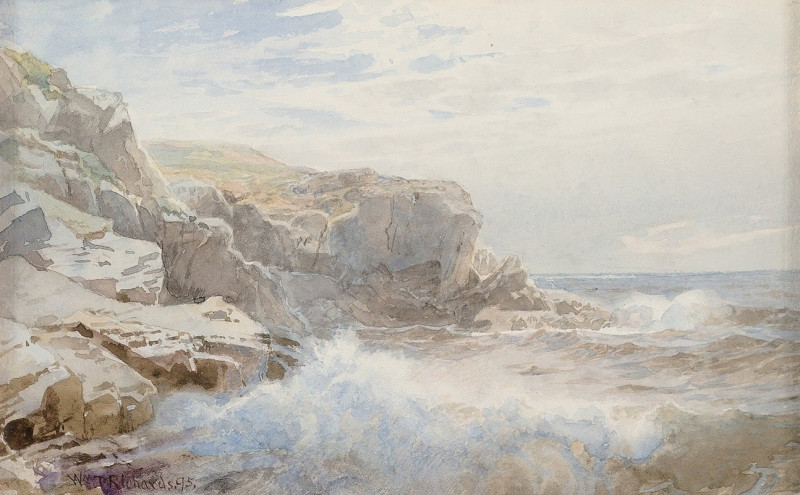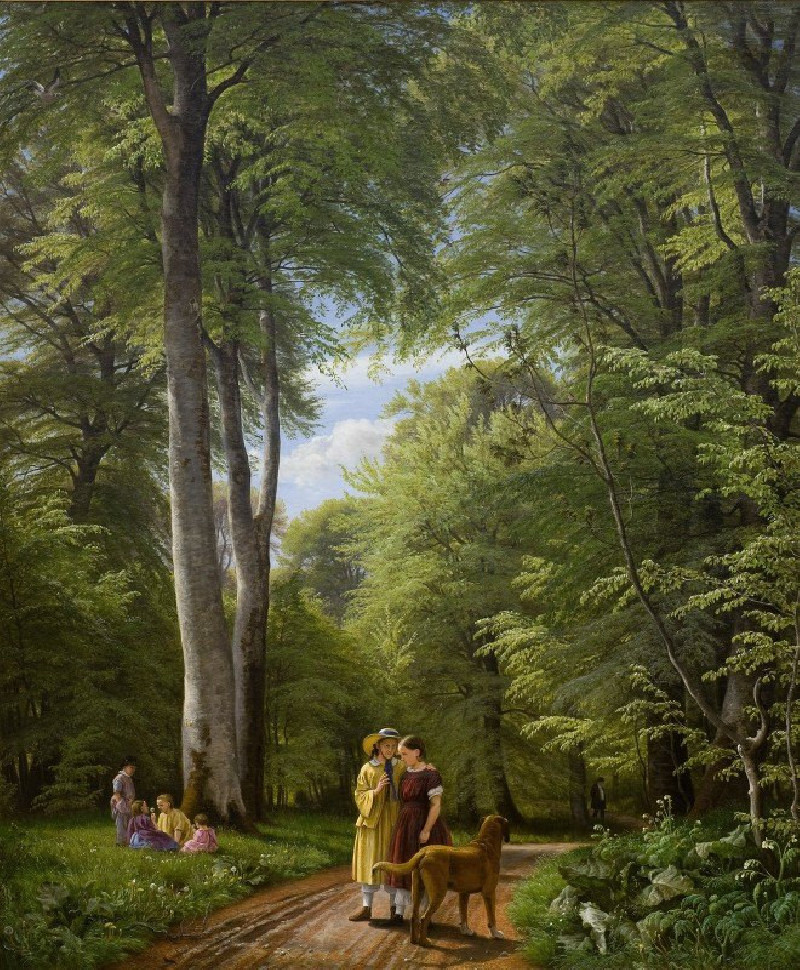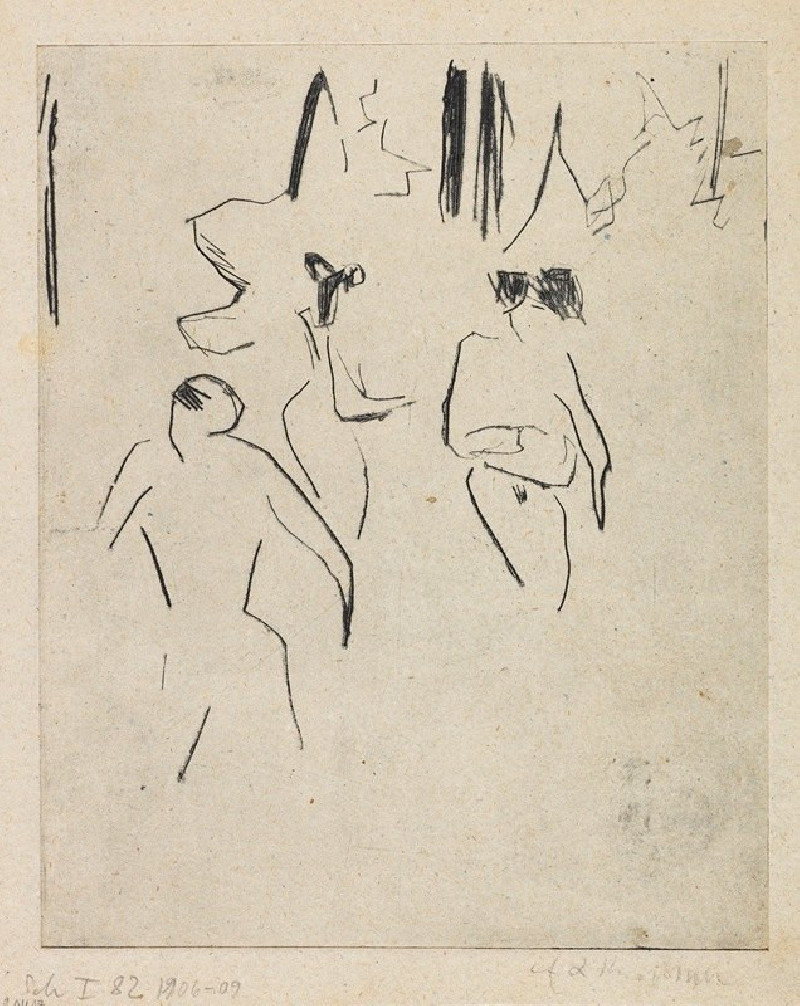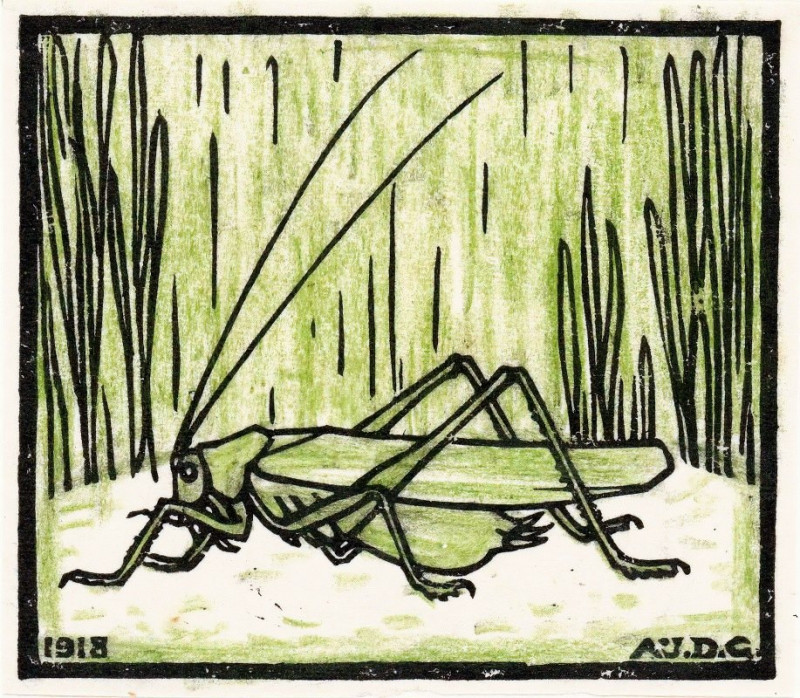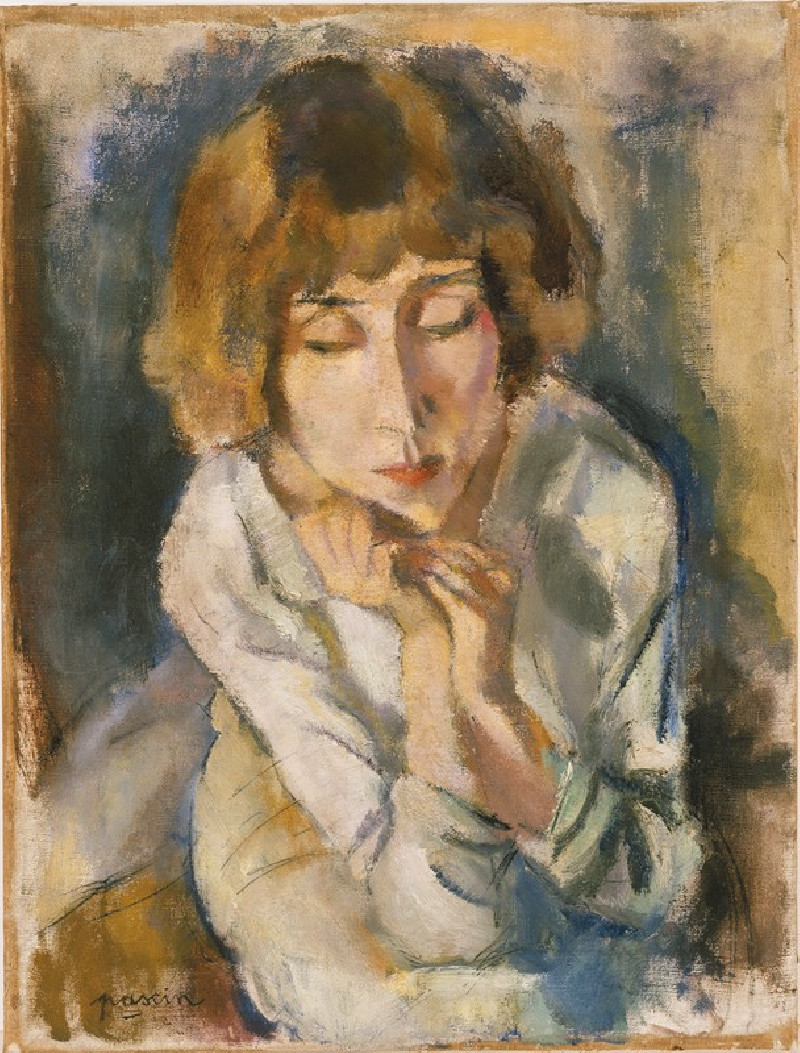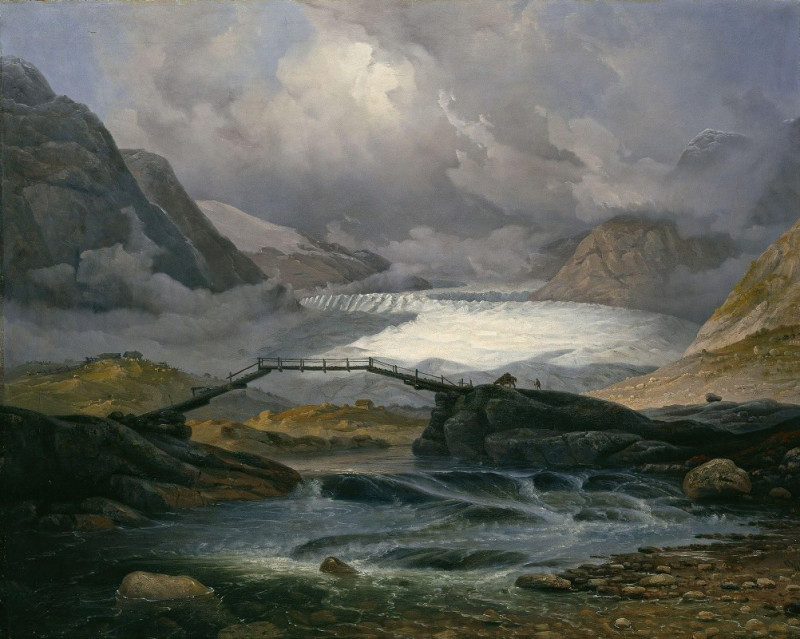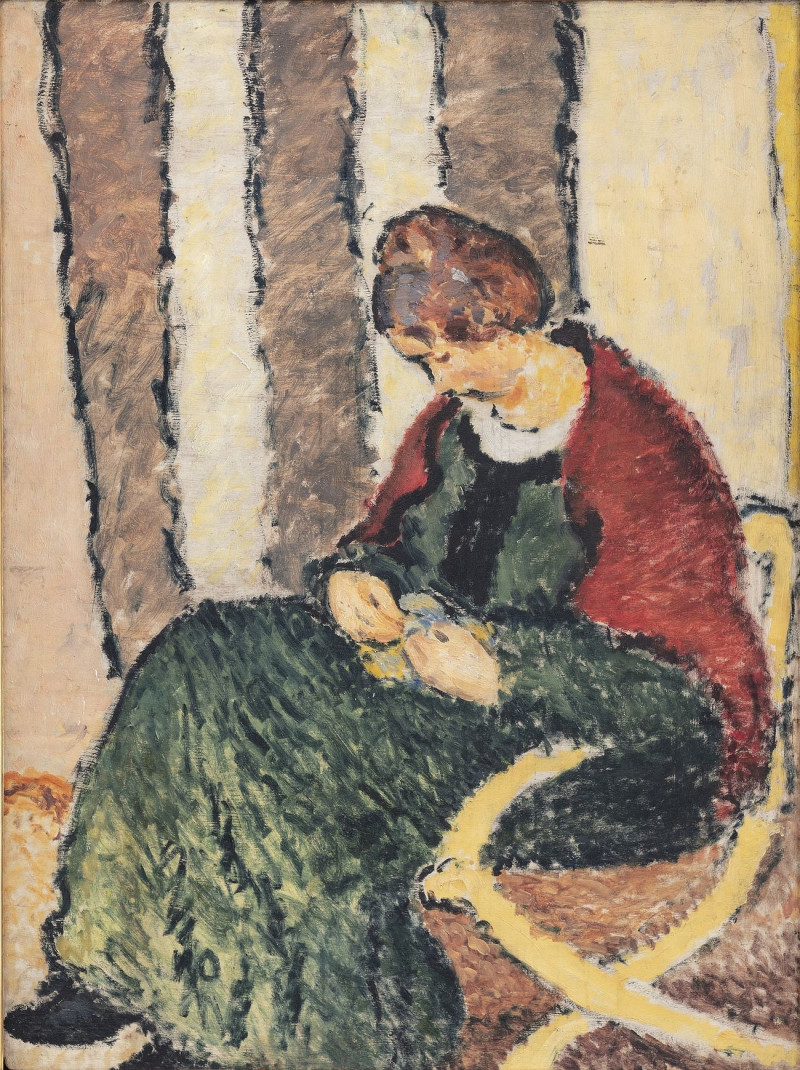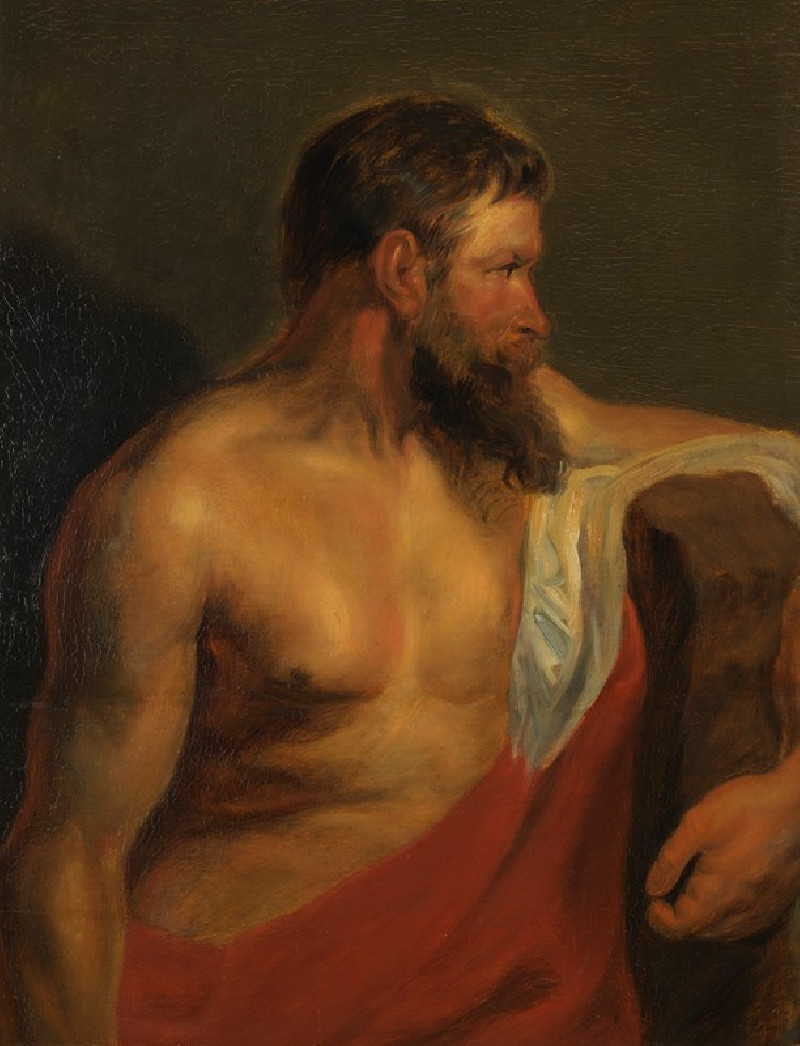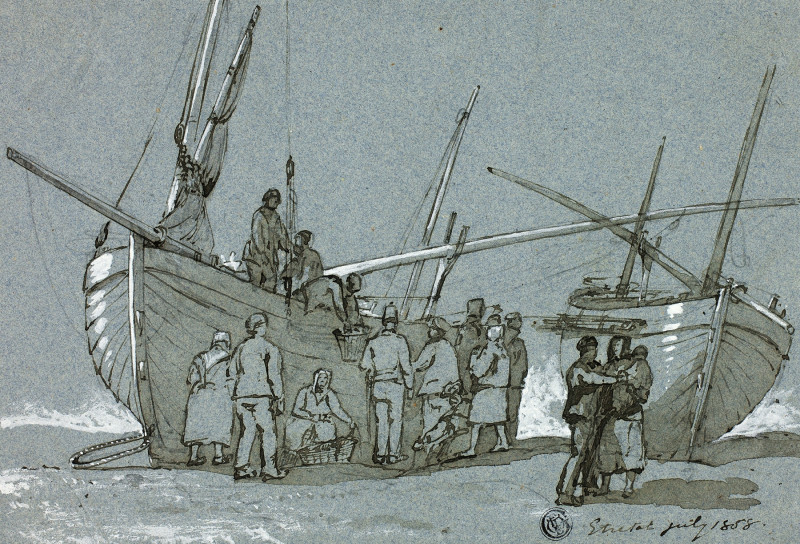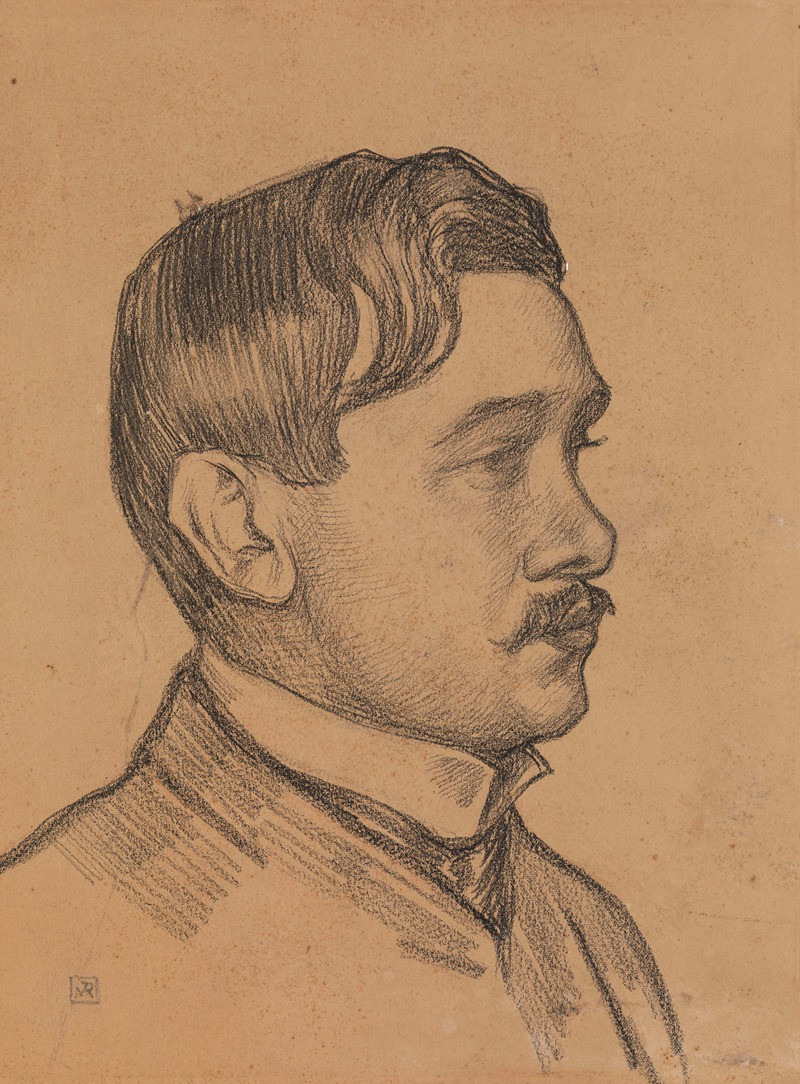Mimi as a Brunette (1889)
Technique: Giclée quality print
Recommended by our customers
More about this artwork
Mary Cassatt's etching "Mimi as a Brunette" (1889) captures the pensive repose of a young girl, Mimi, portrayed with a soulful expression that seems to transcend her youthful years. This artwork is an exquisite example of Cassatt's mastery in portraying the quiet moments of everyday life, with a focus on the intimate and the personal.In this etching, the viewer's eye is immediately drawn to Mimi's face, defined by delicate, thoughtful lines that suggest both innocence and a burgeoning self-awareness. Her eyes gaze off to the side, lost in thought, giving the viewer a sense of her inner life. Cassatt's skillful use of light and shadow, and the fine details of Mimi's features and hair, enhance the emotional depth of the portrait.Mimi is seated in what appears to be a relaxed, yet slightly formal pose, with one arm resting along the back of her chair and her body turned slightly towards the viewer. This pose, combined with her direct yet unfocused gaze, invites the audience into a moment of introspective quietude.The background and details surrounding Mimi are sketched with lighter, more fluid lines, implying a space that is both present and ethereal, focusing our attention back on the figure herself. This technique highlights Cassatt's ability to blend realism with a touch of impressionistic ambiguity."Mimi as a Brunette" is not only a portrayal of a young girl but also a profound exploration of the themes of youth, introspection, and the subtlety of human emotion.
Delivery
Returns
Mary Stevenson Cassatt was an American painter and printmaker. She was born in Allegheny City, Pennsylvania (now part of Pittsburgh’s North Side), but lived much of her adult life in France where she befriended Edgar Degas and exhibited with the Impressionists. Cassatt often created images of the social and private lives of women, with particular emphasis on the intimate bonds between mothers and children.
She was described by Gustave Geffroy as one of "les trois grandes dames" (the three great ladies) of Impressionism alongside Marie Bracquemond and Berthe Morisot.In 1879, Diego Martelli compared her to Degas, as they both sought to depict movement, light, and design in the most modern sense.


